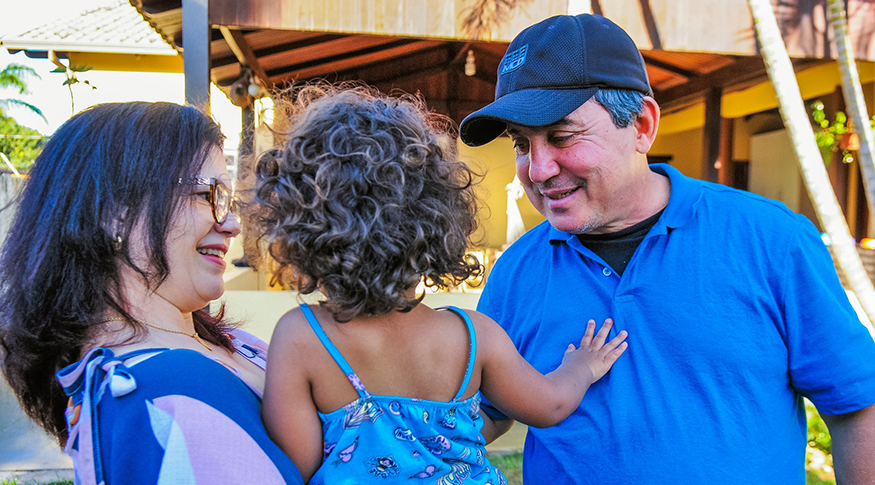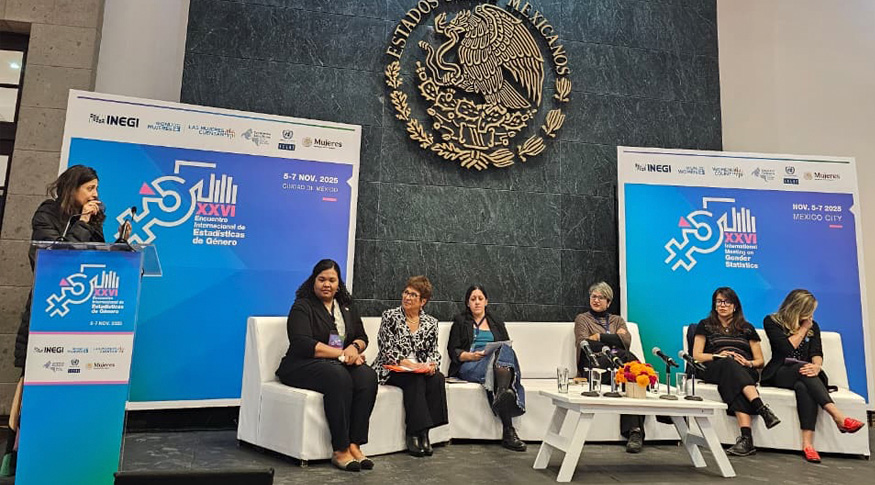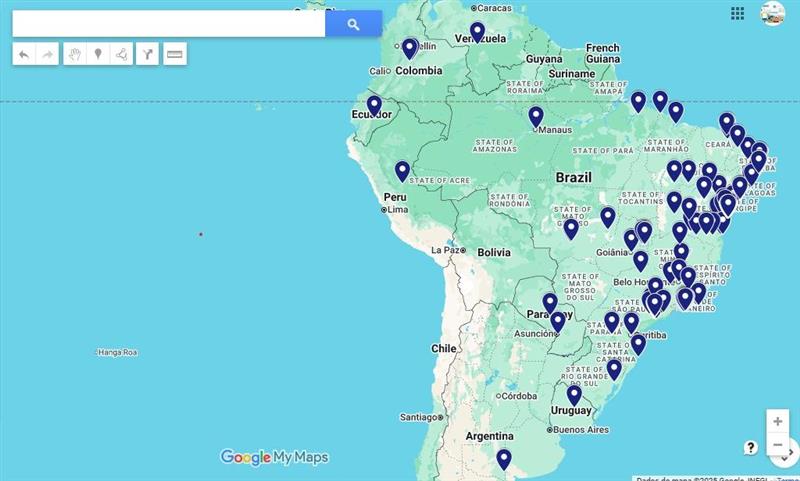2022 Census
2022 Census: In 12 years, proportion of female householders advances and equals that of male ones
October 25, 2024 10h00 AM | Last Updated: October 29, 2024 05h17 PM
Highlights
- In Brazil, according to the 2022 Census, 50.9% of the householders were men (37 million) and 49.1%, women (36 million). There was a significant change from 2010, when the percentage of male householders (61.3%) was significantly higher than that of female ones (38,7%).
- In 2022, more than half (57.5%) of the households had a householder and a spouse or partner of a different sex. There was a drop from 2010 (65.3%).
- The households with a householder and a spouse or partner of the same sex were 0.54% of the total. In spite of this small percentage, there was a significant increase from 2010 (0.10%). The number of housing units went from 59,957 in 2010 to 391,080 in 2022.
- From 2010 to 2022, the proportion of households with a householder, spouse and child of both parties dropped from 41.3% to 30.7%, whereas the proportion of units with a spouse, partner and child dropped from 8.0% to 7.2%. The proportion of couples without children increased from 16.1% in 2010 to 20.2% in 2022.
- Among the four types of households, the most frequent was the nuclear one, 64.1% of the total, followed by the one-person (18.9%), extended (15.4%) and composite type (1.5%). In 2010, the percentages were, respectively, 66.3%, 12,2%, 19.1% and 2.5%.
- The biggest concentrations of elderly householders (60 years of age and over) were in one- person households (28.7%) and in extended ones (21.7%).
- From August 2021 to July 2022, ten years prior to the date of reference, a total of 1,326,138 deaths were reported in the country by the 2022 population Census, being 722,225 deaths (54.5%) for the male sex and 603,913 (45.5%) for the female sex.
- In the population aged 15 to 34, male deaths outnumbered female ones. The age group with the highest sex ratio of deaths (deaths of men divided by deaths of women) is 20 to 24 years of age (371 male deaths per every 100 female ones, or Brazilian excess mortality among men being 3.7 higher than among women).

In 2022, among the 72.5 million households in Brazil, 49.1% had female householders. The proportion represents an important change from the 2010 Census, when the percentage of male householders (61.3%) was significantly higher than the percentage of female ones (38.7%). A household is a group of persons living in a private housing unit.
The data come from “2022 Population Census: Composition of households and reported deaths: Population results”, released today (25) by the IBGE. The release event will start at 10 am at Casa Brasil IBGE, at Palácio da Fazenda, downtown Centro do Rio de Janeiro. It will be streamed on Digital IBGE. Information is also available at Sidra, on the Geographic Interactive Platform (PGI) and on Census Overview.
In 10 states, the percentage of female householders surpassed 50%: Pernambuco (53.9%), Sergipe (53.1%), Maranhão (53.0%), Amapá (52.9%), Ceará (52.6%), Rio de Janeiro (52.3%), Alagoas and Paraíba (51.7%), Bahia (51.0%) and Piauí (50.4%).
“Census data show that most of these Federation Units are concentrated in the Northeast Region. The lowest percentages, on the other hand, are found in Rondônia, 44.3%, and in Santa Catarina, 44.6%. It is observed that, in general, the Federation Units followed the national trend with increase in the proportion of households headed by women,” says the survey analyst, Luciene Longo.

Proportion of households formed by a couple with a child of both parties dropped from 41.3% to 30.7% in 12 years
From 2010 to 2022, the proportion of households with a householder, a spouse and a child of both parties dropped from 41.3% to 30.7%, whereas the proportion of couples without children went from 16.1% in 2010 to 20.2% in 2022.
The proportion of households formed by couples with at least one child of either the householder or the spouse went from 8.0% to 7.2%. “In spite of the decrease, the share of these households in the total arrangements with children increased,” remarks the manager for IBGE’s Population Projections and Estimates, Márcio Mitsuo Minamiguchi.
Single-parent households, that is, those with a householder without a spouse but with or child, changed little between 2010 and 2022 (from 16.3% to 16.5%). Other types of arrangement gathered 25.5% of the households, with 18.9% being of the one-person type (which, in 2010 made up 12.2%), and households with more than a resident, without a spouse, child or stepchild, which recorded little change (from 6.6% in 2022, and 6.1% in 2010).

In 2022, 57.5% of the households had a householder and a spouse of a different sex, 41.9% were households without a spouse and 0.54% had a householder and a spouse of the same sex.
“Although at a small percentage, the increase in households formed by same-sex couples was significant. The proportion changed from 0.10% in 2010 to 0.54% in 2022, which represents, in absolute figures an increase from 60 thousand to 391 thousand housing units,” says Márcio.
By Major Region, the biggest proportions of housing units with a householder and a spouse of the same sex were found in the Federal District (0.76%), Rio de Janeiro (0.73%) and São Paulo (0.67%). The states with the lowest percentages were Piauí (0.25%), Maranhão (0.30%) and Tocantins (0.31%).
About 67% of the householders were 40 years of age and over
Most of the householders were aged 40 and over (67.3%). There was a slight increase from 2010, when 62.4% of the householders were in this age group. The biggest part, in 2022, were in the group aged 40 to 59 (40.1%), by both persons aged 25 to 39 (27.2%) and by those aged 60 and over (27.2%). It was also observed that 5.2% of the householders were aged 18 to 24 and 0.4%, up to 17.
For the first time, brown persons surpassed white ones as householders
Despite similar figures, for the first time, the Census registered a bigger proportion of brown householders (43.8%) in comparison with white ones. In 2010, the percentages were 40.0% and 49.4%, respectively.
The proportion of black persons increased from 9.0% to 11.7% and that of Indigenous persons changed from 0.4% to 0.5%. On the other hand, the proportion of Asian householders fell from 1.2% in 2010 to 0.5% in 2022.
The analysis of Federation Units by color or race shows that in the states in the South Region, São Paulo and Rio de Janeiro, there was a biggest proportion of white householders. In all the other Federation Units, the majority reported being brown.
“Higher percentages of Indigenous persons stand out in households in Roraima, 10.2%, Amazonas, 5.7%, and Mato Grosso do Sul, 27%, as well as the bigger proportion of those self-declared black persons in Bahia, 25% of the population.”
The remainder is temporarily in Portuguese.
Number of residents per household drops from 3.3 in 2010 to 2.8 in 2022
In 2022, approximately 202 million persons lived in the 72 million private housing units in the country, which means an average of 2.8 residents per housing unit. In 2000, the average was 3.7 people, versus 3.3, in 2010. About 72.3% of the households have up to three residents and 28.7% have two residents.
Considering total residents, 35.9% were householders, 20.6% were their spouse or partner of a different sex, 19.2% were children of the spouse/partner and 11.6% were children of the householder only.
“In this analysis, a highlight is the percentage of grandchildren, a total of 3.9%, indicating the presence of more than one family per household. The presence of children points to the presence of a grandfather or grandmother who is in charge of the housing unit, that is, there is coexistence of different generations,” the analyst explains.
Proportion of one-person households increased from 12.2% in 2010 to 18.9% in 2022
The types of households have their specificities and represent, in a certain way, the configuration of the domestic environment of the population. They were classified as:
- One-person: those with only one resident;
- Nuclear: those formed by a couple, or a couple with a child/children, without any other person;
- Extended: those where there is another type of relative (ex: grandchild, son-in-law or daughter-in-law);
- Composite: those where there is a non-related resident (non-relative, partner, pensioner).
Most housing units were nuclear (64.1%); 18.9% were one-person; 15.4%, extended and 1.5%, composite. In all the categories of sex or color or race, the nuclear household is predominant among the species, with a highlight to white men (70.3%). Since the latest Census, the one-person type of household was the only one to increase in participation (from 12.2% to 18.9%).
“Among women, there are higher percentages of one-person households, especially among Asian (26.5%) and white (23,4%) persons, probably due to population aging,” the analyst explains.
There is a bigger proportion of extended households and a smaller one of nuclear households nuclear among female householders (18.8% and 60.6%, respectively) against male householders (12.1% and 67.6%, respectively). “This result shows that women, in general, tend to be responsible for bigger housing units.”

The characterization by age group shows that most households in all groups are nuclear (64,1%). In the groups aged 60 and over, the proportion of one-person housing units also stood out, representing 28.7% of the households in this age bracket.
“That is also related to the population aging, once the elderly are more prompt to live alone due to a number of occurrences in their life cycle, for example, death of their partner, divorce, children’s moving out of home. Therefore, these are important characteristics that help explain the fact householders in this age group are underrepresented in one-person households.”
On the other hand, the group aged 60 and over also has the biggest proportion of extended households, with 21.7%. “That is another characteristic of elderly householders, of living with their family members, other than children and spouses.”
By area, the biggest proportion of one-person households were found in Rio de Janeiro (23.4%), Rio Grande do Sul (22.3%) and Espírito Santo (20.6%), whereas the lowest percentages were those of Amapá (12.0%), Amazonas (13.0%) and Pará (13.5%).
Number of deaths is higher among men aged 15 and 34 years of age
Between August 2021 and July 2022, 12 months before the data of reference of the 2022 Population Census, there were, in Brazil, a total of 1,326,138 deaths, with 722,225 male deaths (54.5%) and 603,913 (45,5%) female ones.
The biggest share of male deaths, calculated by the death ratio (male deaths divided by female deaths), is found in the group aged 20 to 24, indicating, approximately, 371 male deaths per every 100 female deaths, that is, male excess mortality of 3.7 times.
“Between the group aged 15 to 19 until the group aged 30 to 34, the biggest number of male deaths in relation to female ones is related to a bigger number of external, or violent, deaths, so women are less affected. For example, there are car accidents and homicides,” Izabel Marri, manager of IBGE’s Population Studies and Analysis.
Male excess mortality is only reversed in in older age groups, from the age of 80 on, where the share of female deaths surpasses that of male ones.
"This behavior takes place due to the higher mortality of men in all the age groups, so, at a certain age, the number of surviving women is higher than that of men, so the number of female deaths will also surpass that of male ones.”
In 2022, the population aged 0 to 4 represented 6.3% of the total population and 2.6% of the total number of deaths. Persons aged 80 and over were 2.3% of the population and deaths at this age onwards made up 31.2% of the total deaths in the country.
The distribution of deaths by sex and age groups shows a decreasing number of deaths since the age group of children up to one year of age to the group of persons aged 10 to 14, due to higher risk of death for children in their first year of life. Starting from this age group, the number of deaths starts an upward trend up to the group aged 70-74 for men and 80 - 84 for women, then it starts to decline.

Tocantins has the highest excess male mortality among the Federation Units
The highest sex ratio of deaths, and, consequently, the highest excess male mortality, is found in the state of Tocantins, with 150 male deaths for every 100 female deaths, which results in excess male mortality of 1.50 times. Following it are Rondônia (1.48), Roraima (1.47), Mato Grosso (1.42), Amapá (1.41), Amazonas (1.37) and Pará (1.36), all above the national average (1.20). The lowest excess male mortality is that of Rio de Janeiro (1,05).
From age 20 to 39, Sergipe presents highest excess male mortality
Persons aged 20 to 39, the group most prompt to deaths by external or violent causes reaching the male population, the higher excess mortality of men in relation to women was found in the state of Sergipe (3,49), followed by Ceará (3.35), Rondônia (3.31), Bahia (3.29) and Tocantins (3.28). The lowest rates of excess mortality among men were those of Roraima (1.85), São Paulo (2.16) and Rio de Janeiro (2.21).
More about the survey
The Population Census is the main reference source about the living conditions of the population in all the Brazilian municipalities and their territorial areas. This publication presents population results of the survey concerning two topics: composition of households, based on the relationship of kinship or cohabitation of residents with the householder, and data on deaths of residents living in one same household.


















